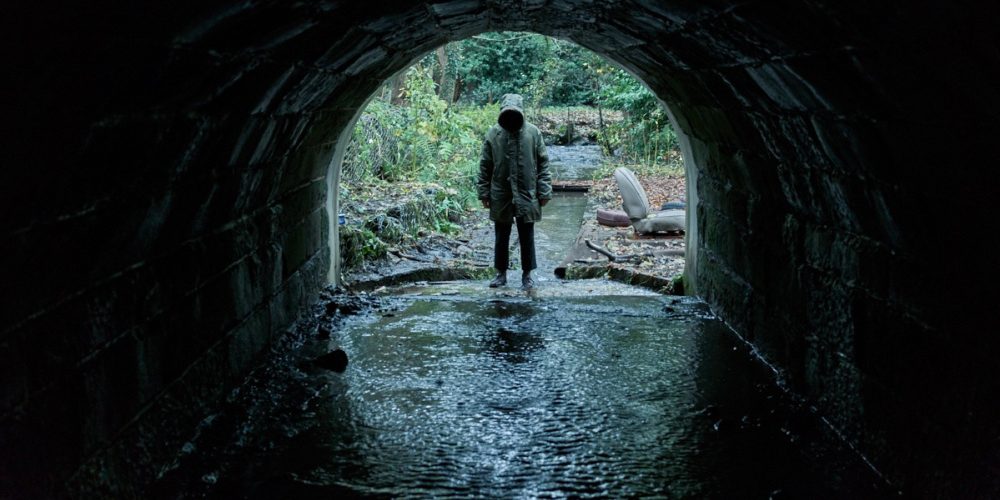Three tall tales to tell.
British horror films don’t tend to always make it to the big screen, but they do seem to offer something a little bit more unnerving than American efforts when they get there. In Ghost Stories, Andy Nyman and Jeremy Dyson direct the adaptation of their stage play, with Dyson in one of the lead roles, too.
Dyson plays a professor looking to debunk any and all comers, but is plunged into something weirder when handed three cases to explore by a mystery contact. There are jump-scares all over the place, with a dash of British humour to help things along.
That humour is probably what helps it to separate from the pack of possession and haunting movies usually on at the local multiplex. Paul Whitehouse plays his role brilliantly, with his comedic timing derived from decades of work. He makes you believe he is a normal bloke tormented by something more horrific. Alex Lawther, meanwhile, is the anxious, on-edge teen, pushed to a meltdown by his experience in the woods, while Martin Freeman is the affluent businessman with a home haunting to contend with.
These three initial stories are pinned really well by the interviews which precede the flashbacks, despite the fact that they appear to be simple tales to get under the skin. The first story feels manufactured (who wants a disused asylum watched over at night for years on end?) but is anchored by Whitehouse, while the home of Lawther’s character is as scary as the woods – he also has some tidy comedic moments, adding some very British logic to his car breakdown.
‘Paul Whitehouse plays his role brilliantly, with his comedic timing derived from decades of work’
However, once the third story comes to a conclusion, the whole film goes awry. As an audience, we want some kind of confirmation or dismantling of the stories, but instead it moves on to what, presumably, Nyman and Dyson felt was a bigger finale. In trying to tie the whole thing together in a neat package, the impact of what we’ve seen is softened. Dyson doesn’t lend a human heart to our central character either, making you care less about any revelations further in – sure his character has depth, but he’s not necessarily likable.
Jump-scares aren’t all there is to this story, by the way, there are other common horror tropes, like the creepy child, the strange noises in the distance, the dark rooms and the insane asylum. These horrific elements are done well, with adequate attention shown to the tone of each story, but by the end, the offbeat elements start to pull your attention from your fear and leave you a bit bewildered by the close.
As a horror fan, you want to feel your comfort in the real world tested – you want a horror film to leave you with wondering about whether you’ll dare to get up in the dark of the night to go to the loo without turning a light on. Some moments might catch in your mind every once in a while, but as a whole those memories will be tainted with the questions the film left you with.
Clues to what is really happening are littered throughout the whole piece, including the three stories, but you won’t necessarily realise until the very final scene. It isn’t the most rewarding payoff either, for anyone who does hunt the clues on their first viewing. While I enjoyed watching this, I’m a little surprised it made it all the way to a big screen distribution deal.
I’ve not seen the stage play, though I’d imagine they felt a loyalty to what they already had and ploughed on with that regardless of whether it was the right fit for film or not. You can see how this might work in acts, with limited scenery to play with and a topsy-turvy central character, but I’d say go for the three tall tales and think yourself lucky it wasn’t another hokey horror reboot.
